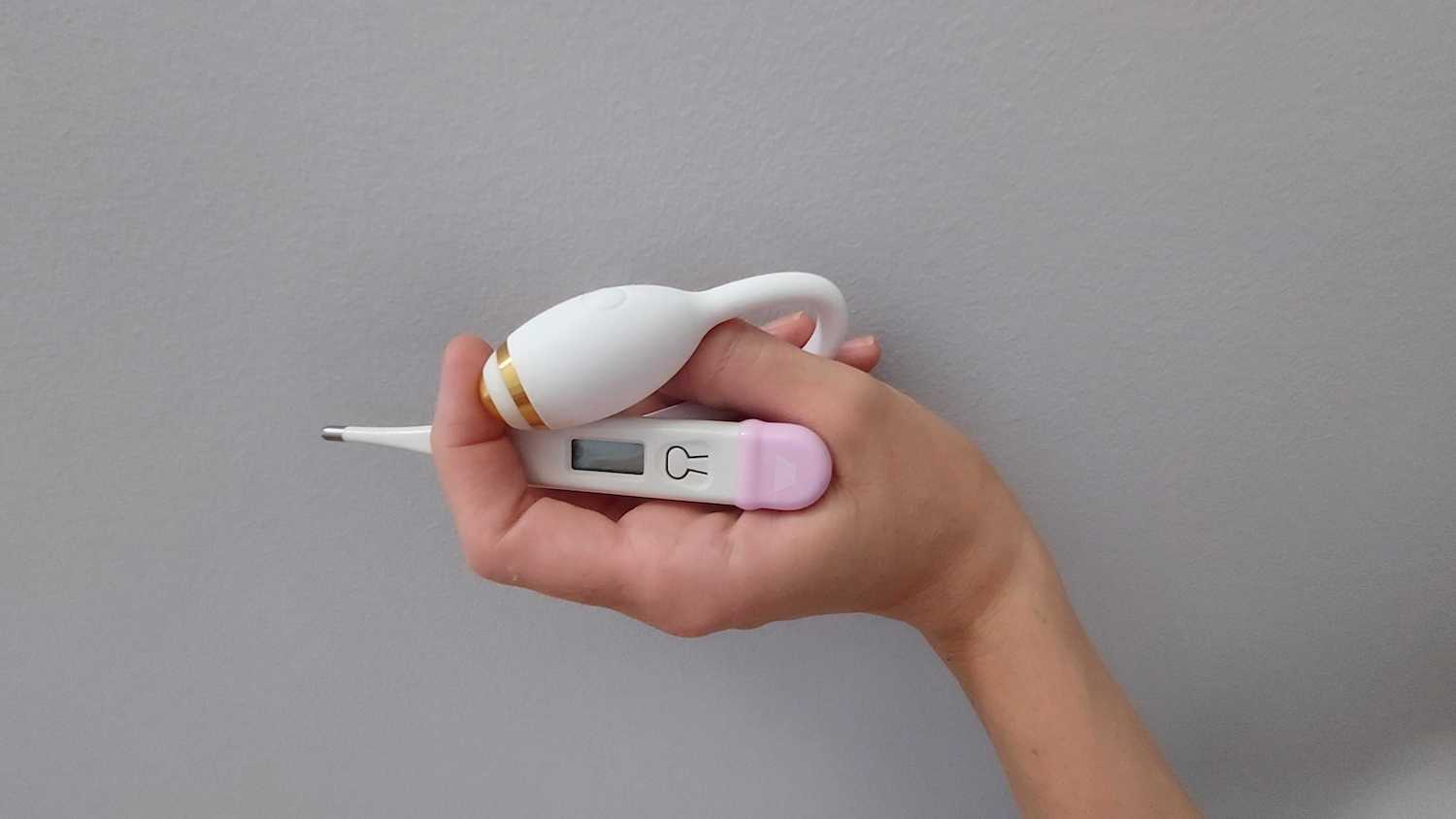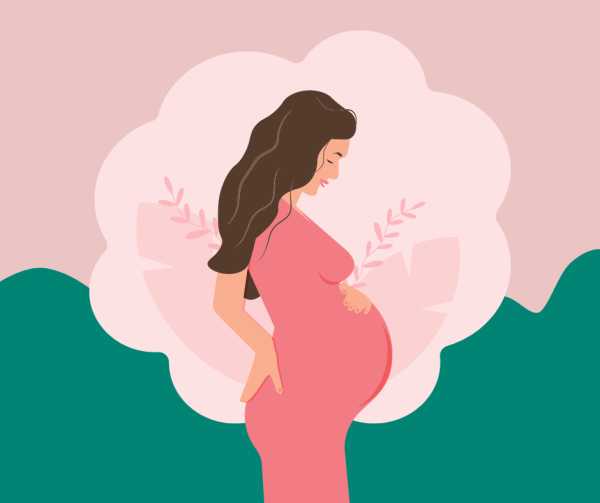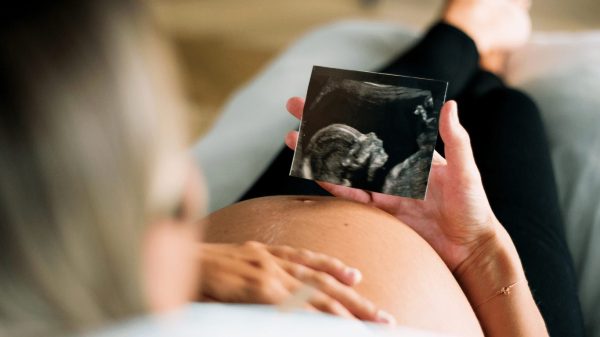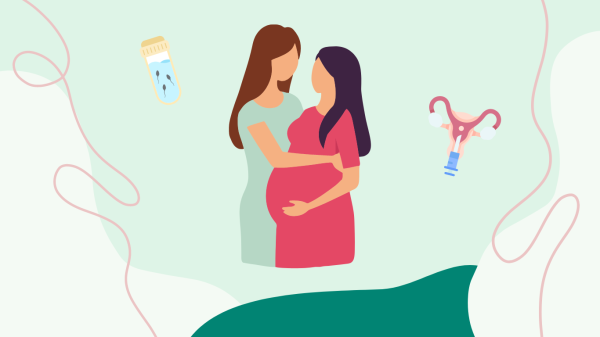Tracking your basal body temperature or tracking your cervical both can yield insights into your fertility. Let’s take a closer look.
Basal Body Temperature (BBT) Tracking
Dating back to the early 1900s, scientists identified that a rise in the body’s core resting temperature, or basal body temperature, correlated with ovulation. This subtle increase in temperature occurs due to the rising progesterone that happens as a result of ovulation. This discovery helped pave the way for basal body tracking methods, including the symptothermal method.
To track your basal body temperature, you will need a basal body thermometer. Use this thermometer everyday around the same time upon waking each day, before getting up and moving about. Next, record your temperature in order to track your temperatures throughout the cycle.
In the follicular phase, or the timeframe between your period and ovulation, temperatures fluctuate but generally remain low. Then, after ovulation, temperatures rise and stay elevated until progesterone begins to descend and ushers in the start of the new cycle, or your period.
To track your basal body temperature, you will need a basal body thermometer. Use this thermometer everyday around the same time upon waking each day, before getting up and moving about. Next, record your temperature in order to track your temperatures throughout the cycle.
In the follicular phase, or the timeframe between your period and ovulation, temperatures fluctuate but generally remain low. Then, after ovulation, temperatures rise and stay elevated until progesterone begins to descend and ushers in the start of the new cycle, or your period.
Confirming Ovulation with BBT
There are varying methods for confirming ovulation by tracking your BBT. A common method consists of having three consecutive temperatures at least .2˚F higher than the previous 6 measurements. This temperature shift indicating ovulation has occurred helps users recognize the closure of their fertile window. Once the egg is released from the ovary, it can survive for about 24 hours if not fertilized.
BBT highlights
- Tracking your BBT consists of taking your temperature immediately upon waking everyday and recording the value.
- A common method used to confirm ovulation consists of having three consecutive temperatures at least .2˚F higher than the previous 6 measurements.
- BBT tracking does not give the user notice of the fertile window opening. Instead the user can see when ovulation has passed and the fertile window is closing.
Tracking Cervical Fluid with kegg
While the cyclical changes in the cervical fluid is not a new phenomenon, it was not until the 1950s that doctors began to understand the role of cervical fluid and the insights it provides into the phases of the cycle. Dr. Melvin Cohen recognized the changing qualities of the cervical fluid surrounding ovulation, around the same time Dr. Erik Odeblad identified different types of cervical fluid which occur throughout the cycle, associated with the changes in progesterone and estrogen.
There are many methods for tracking the changes in the cervical fluid. Manual observation methods require several months of training and practice before a user becomes proficient in identifying their cervical fluid. kegg allows a user to successfully track their cervical fluid starting on day one. Instead of assigning qualitative labels to the type of mucus, kegg detects the changes in electrolytes in the cervical fluid, allowing the user to see the full fertile window.
There are many methods for tracking the changes in the cervical fluid. Manual observation methods require several months of training and practice before a user becomes proficient in identifying their cervical fluid. kegg allows a user to successfully track their cervical fluid starting on day one. Instead of assigning qualitative labels to the type of mucus, kegg detects the changes in electrolytes in the cervical fluid, allowing the user to see the full fertile window.
Your fertile window and kegg
While kegg offers several unique benefits, such as the flexibility of choosing a timeframe to take the reading in either the morning or evening, kegg stands out from all other fertility trackers because it allows the user to see the full fertile window. As the fertile window opens, the kegg readings move downwards on the kegg chart. These descending and low readings indicate the vaginal environment is hospitable to sperm. The user can watch their fertile window progress in real time, from the start of the valley, through the closure when they see the kegg readings rise again.
The rising progesterone which primarily occurs after ovulation causes a distinct shift in the electrolyte concentration in the cervical fluid. This change results in a rise in the kegg readings. When the user sees this rise, she can suspect that ovulation occured on the day of the rise or the day before the rise.*
The rising progesterone which primarily occurs after ovulation causes a distinct shift in the electrolyte concentration in the cervical fluid. This change results in a rise in the kegg readings. When the user sees this rise, she can suspect that ovulation occured on the day of the rise or the day before the rise.*
kegg highlights
- Tracking your cycle with kegg consists of taking your two minute reading once a day within the same two hour window (morning or evening)
- kegg detects the changes in the cervical fluid allowing the user to see the full fertile window
- After ovulation, there is a rise in the kegg readings indicating the fertile window is coming to a close
Let’s compare
While tracking your BBT and tracking your cervical fluid with kegg are both utilized to monitor your fertility, there are distinct differences which users may appreciate.
Tracking your BBT
Tracking with kegg
Fertility tracking insights
Shows ovulation has occurred, after the fact
Allows the user to see the full fertile window, from the opening, through the duration, to the closure. The user can suspect ovulation has occurred once they see a rise
Time of day
Must be used immediately upon waking
Can be used at a time convenient for you, within the same 2 hour widow daily
Helps user know when to time intercourse
Results impacted by lifestyle
BBT can be skewed by awaking at a different time, night time wakings, alcohol consumption, illness, and activity upon waking
kegg readings can be impacted by vaginal medications and semen (if used within 8 hours of intercourse)
Shows real time changes in fertility
When the user sees a rise in temperature, they can suspect ovulation has occurred.
The user can see their full fertile window unfold, from start through ovulation.
Both BBT and kegg provide personalized insights to the user. While BBT is helpful for confirming that ovulation has happened, kegg helps show users the full fertile window. When trying to conceive, kegg users are able to confidently know when to time their efforts, whereas those who rely on temping do not have an indication of when their fertile window has happened until it has closed. When used together, a kegg user can have more confirmation a fertile valley was successful for ovulation when there is a rise in their temperature.
*Note: kegg alone cannot confirm ovulation. Instead, if a valley was successful for ovulation, the user can suspect it occurred on the day of the rise or the day before the rise when exiting the fertile valley.
*Note: kegg alone cannot confirm ovulation. Instead, if a valley was successful for ovulation, the user can suspect it occurred on the day of the rise or the day before the rise when exiting the fertile valley.





